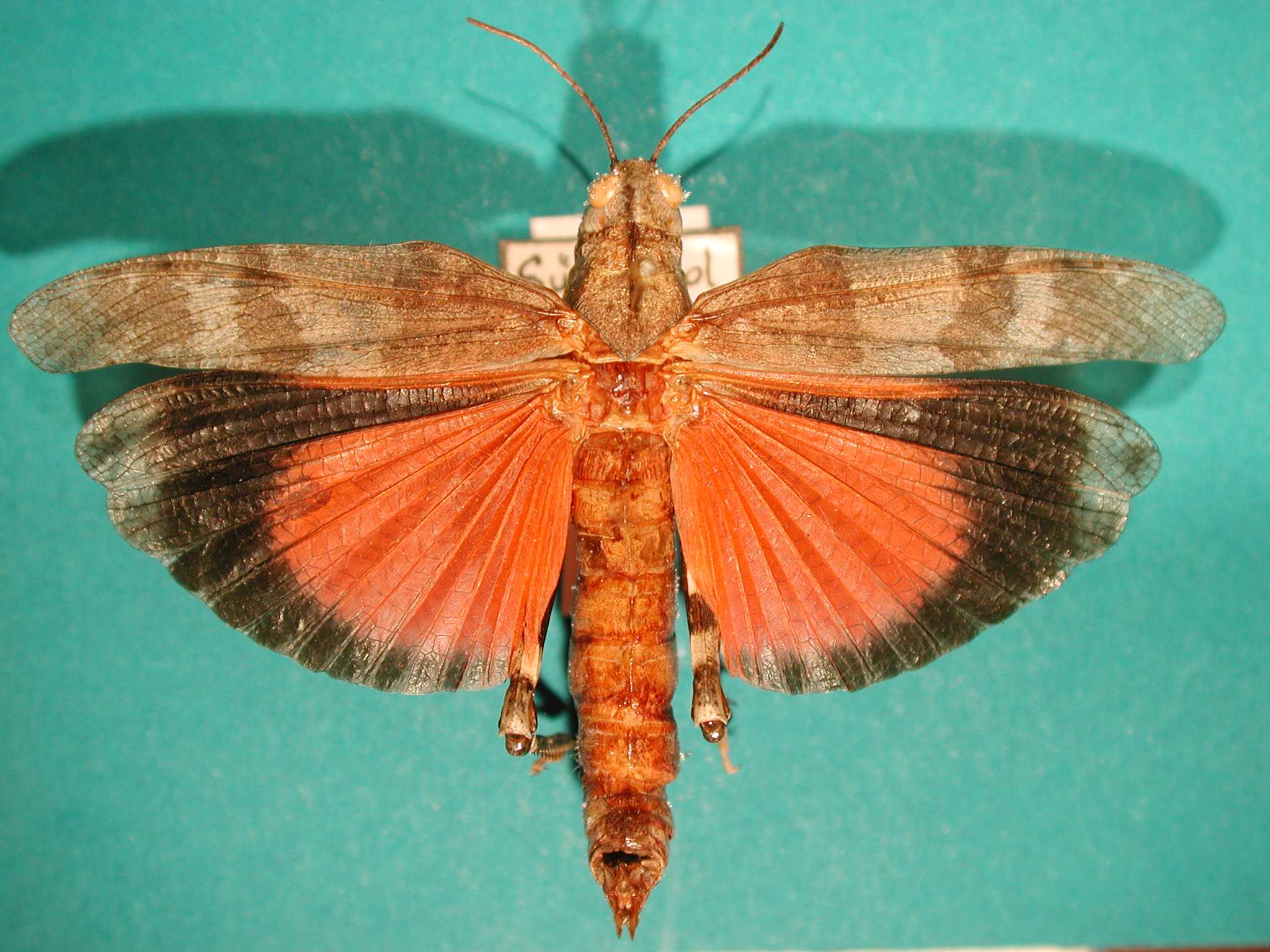|
Oedipoda Miniata
''Oedipoda miniata'', sometimes known as the red-winged grasshopper (although the name is also used for '' O. germanica''), is a grasshopper species in the subfamily Oedipodinae found in Southern Europe, northern Africa and the Middle-East. It was originally described in 1771 as '' Gryllus miniatus''. It is in the ''Oedipoda caerulescens'' species group. Subspecies Orthoptera Species File and the Catalogue of Life The Catalogue of Life is an online database that provides an index of known species of animals, plants, fungi, and microorganisms. It was created in 2001 as a partnership between the global Species 2000 and the American Integrated Taxonomic Info ... list three subspecies: * ''Oedipoda miniata miniata'' (Pallas, 1771) * ''Oedipoda miniata atripes'' Bei-Bienko, 1951 * ''Oedipoda miniata mauritanica'' Lucas, H., 1849 References {{Taxonbar, from=Q10607785 Oedipodinae Orthoptera of Europe Insects described in 1771 Taxa named by Peter Simon Pallas ... [...More Info...] [...Related Items...] OR: [Wikipedia] [Google] [Baidu] |
Lesbos
Lesbos or Lesvos ( el, Λέσβος, Lésvos ) is a Greek island located in the northeastern Aegean Sea. It has an area of with approximately of coastline, making it the third largest island in Greece. It is separated from Anatolia, Asia Minor by the narrow Mytilini Strait. On the southeastern coast lies the island's capital and largest city, Mytilene, whose name is also used as a moniker for the island. The regional units of Greece, regional unit of Lesbos, with the seat in Mytilene, comprises the islands of Lesbos, Chios, Ikaria, Lemnos, and Samos. Mytilene is also the capital of the larger North Aegean region. The population of the island is 83,068, a third of whom live in the capital, while the remainder is distributed in small towns and villages. The largest are Plomari, Kalloni, the Gera Villages, Agiassos, Eresos, and Molyvos (the ancient Mythimna). According to later Greek writers, Mytilene was founded in the 11th century BC by the family Penthilidae, who arrived from T ... [...More Info...] [...Related Items...] OR: [Wikipedia] [Google] [Baidu] |
Peter Simon Pallas
Peter Simon Pallas Fellow of the Royal Society, FRS FRSE (22 September 1741 – 8 September 1811) was a Prussian zoologist and botanist who worked in Russia between 1767 and 1810. Life and work Peter Simon Pallas was born in Berlin, the son of Professor of Surgery Simon Pallas. He studied with private tutors and took an interest in natural history, later attending the University of Halle and the University of Göttingen. In 1760, he moved to the University of Leiden and passed his doctor's degree at the age of 19. Pallas travelled throughout the Netherlands and to London, improving his medical and surgical knowledge. He then settled at The Hague, and his new system of animal classification was praised by Georges Cuvier. Pallas wrote ''Miscellanea Zoologica'' (1766), which included descriptions of several vertebrates new to science which he had discovered in the Dutch museum collections. A planned voyage to southern Africa and the East Indies fell through when his father reca ... [...More Info...] [...Related Items...] OR: [Wikipedia] [Google] [Baidu] |
Oedipoda Germanica
''Oedipoda germanica'', sometimes known as the "red-winged grasshopper" (although the name also may be used for ''Oedipoda miniata, O. miniata''), is a species of short-horned grasshoppers belonging to the family Acrididae subfamily Oedipodinae. This grasshopper is present in Austria, Belgium, Greece, France, Germany, Italy, Spain, Switzerland, Czech Republic, and in the Near East. The adult males grow up to long, while the females reach of length. They can be encountered from early June through October in warm and dry stony or rocky habitats. They are almost exclusively phytophagous, mainly feeding in grass of mountain pastures and various herbaceous plants (''Asperula cynanchica'', ''Galeopsis angustifolia'', ''Hippocrepis comosa'', ''Teucrium chamaedrys'', etc.). The body is quite large and rounded. The basic coloration is brown-grayish, with transversal darker areas. The pronotum is equipped with a median Keel (bird anatomy), carina of pronotum not much raised. The compound ... [...More Info...] [...Related Items...] OR: [Wikipedia] [Google] [Baidu] |


